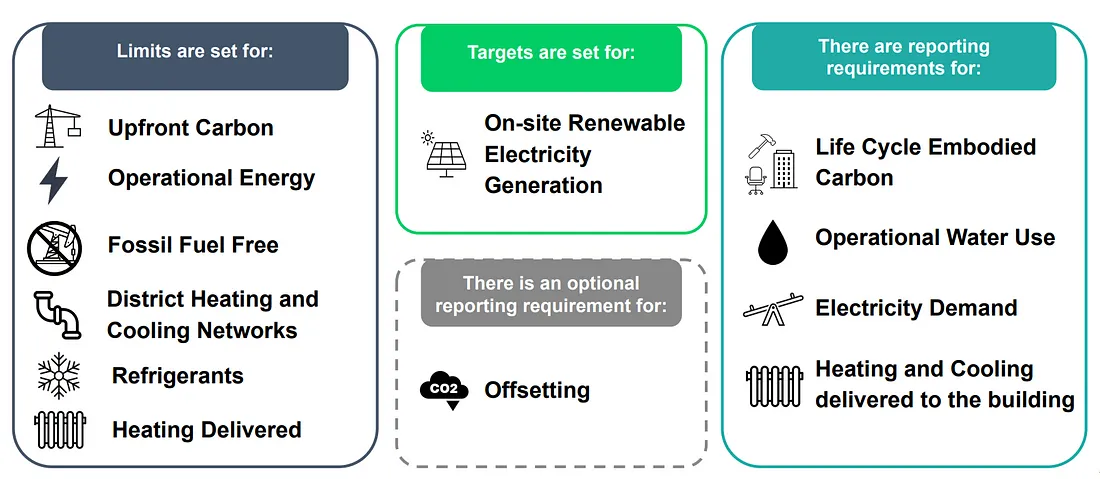SBTi Launches Comprehensive Framework to Align the Buildings Sector with Net-Zero Targets

Image from Pexels
The Science Based Targets initiative (SBTi) has released a pivotal framework designed to guide the global buildings sector toward achieving net-zero emissions by 2050. Recognizing the sector’s significant contribution to global greenhouse gas emissions, this framework sets forth detailed criteria and recommendations to help companies within the industry establish and meet science-based targets aligned with the Paris Agreement’s goals.
Key Aspects of the Framework
The new framework provides a robust set of guidelines for companies in the buildings sector, focusing on both operational and embodied carbon emissions. It emphasizes the importance of setting near- and long-term targets, with a clear trajectory towards decarbonization. The criteria outlined in the report are grounded in the latest climate science, ensuring that the buildings sector can contribute effectively to limiting global warming to 1.5°C.
Core Components
1. Near-Term Targets: Companies are encouraged to set science-based targets within a 5–10 year timeframe, focusing on reducing operational carbon emissions. This includes improving energy efficiency, transitioning to renewable energy, and retrofitting existing buildings to enhance their energy performance.
2. Long-Term Net-Zero Targets: By 2050, all buildings must achieve net-zero emissions, accounting for both operational and embodied carbon. The framework outlines strategies for reducing emissions from materials and construction processes, which are critical for achieving full sector decarbonization.
3. Embodied Carbon: The framework highlights the need to address emissions from building materials and construction activities, which are often overlooked but represent a significant portion of the sector’s carbon footprint. The SBTi provides criteria for reducing these emissions through sustainable sourcing, circular economy principles, and innovative construction techniques.
4. Third-Party Validation: To ensure credibility and transparency, companies are required to submit their targets for validation by the SBTi. This process ensures that the targets are ambitious, science-based, and aligned with the global climate goals.
Implications for the Buildings Sector
The introduction of this framework marks a significant step forward in the buildings sector’s journey towards sustainability. By adopting science-based targets, companies can not only contribute to global climate goals but also gain a competitive edge in a market that increasingly values environmental responsibility. The framework serves as a crucial tool for companies looking to lead the transition to a low-carbon economy, providing clear, actionable steps to align with net-zero targets.
Conclusion
As the world grapples with the urgent need to mitigate climate change, the SBTi’s framework offers a clear path for the buildings sector to contribute meaningfully to global efforts. By setting science-based targets, companies within the sector can play a pivotal role in achieving a sustainable future, ensuring that the buildings we inhabit are not only efficient and resilient but also aligned with the planet’s long-term health.
For more detailed information on the criteria and guidelines, you can access the full report here.
Related articles

Climate-Resilient Materials for the Built Environment: A Data-Centred Prime
As climate volatility intensifies, resilience metrics are fast becoming as critical as carbon data in material selection. This article outlines why adaptation is now a design imperative, how materials can be evaluated through a systems lens, and what KPIs project teams should demand. From self-healing concrete to fire-rated façades, we present a structured taxonomy of resilient materials, explain how to embed this intelligence into digital design workflows, and propose next steps for specification, benchmarking, and procurement.
Read more
The Release of the Pilot Version of the UK Net Zero Carbon Buildings Standard
In September 2024, the Pilot Version of the UK Net Zero Carbon Buildings Standard (NZCBS) was launched, marking a significant milestone in the decarbonisation of the UK’s built environment.
Read more
Research Deep Dive - Health Impacts of Quartz Products and Engineered Stone
This article dives into the health risks associated with crystalline silica in quartz and engineered stone, recent findings in the industry, and safer alternatives available for those looking to minimize health risks without sacrificing quality or aesthetics.
Read more